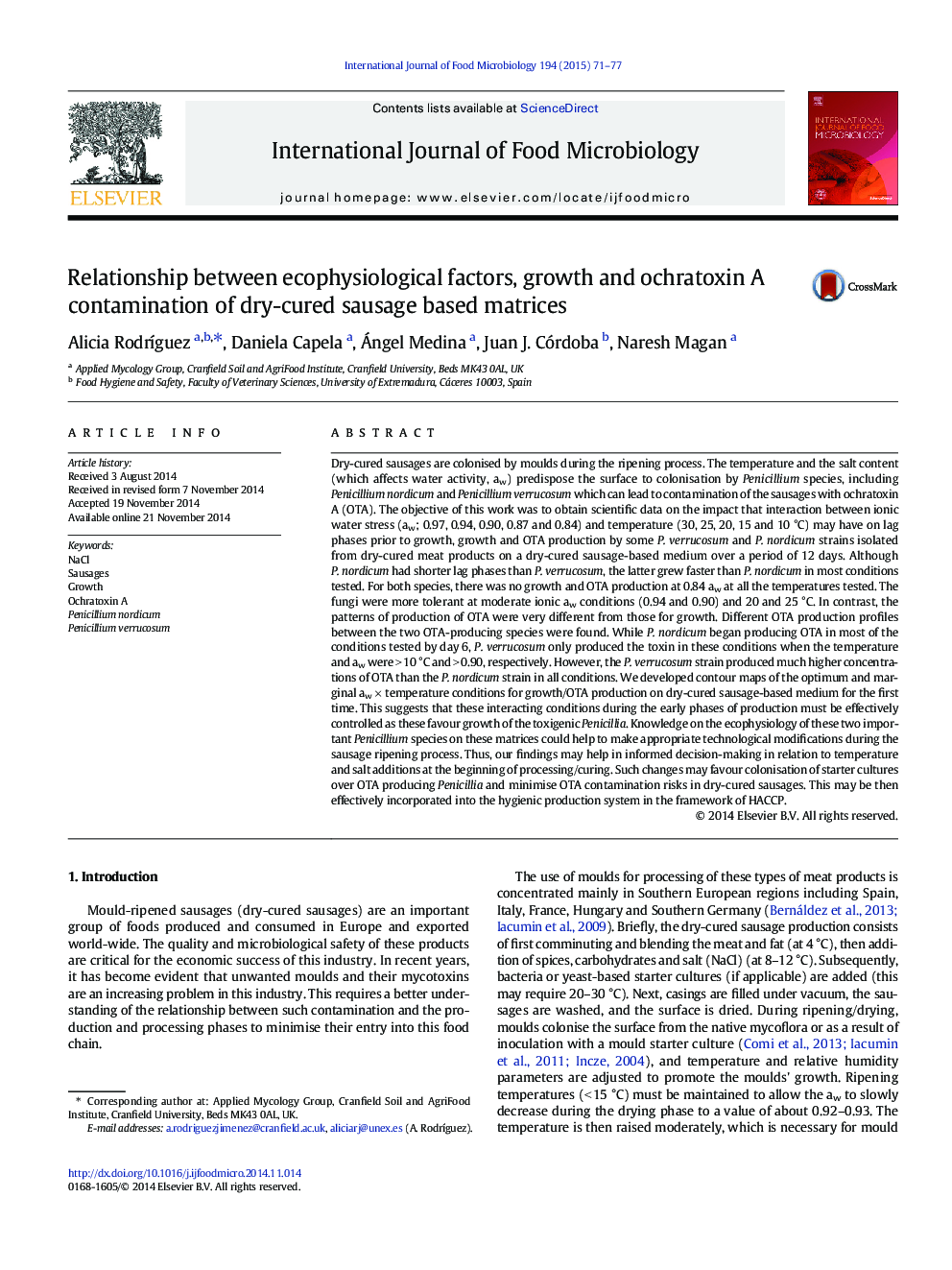| کد مقاله | کد نشریه | سال انتشار | مقاله انگلیسی | نسخه تمام متن |
|---|---|---|---|---|
| 4366694 | 1616589 | 2015 | 7 صفحه PDF | دانلود رایگان |

• Ionic water activity and temperature affect growth/OTA production by Penicillia.
• Lag phases of P. nordicum were shorter than for P. verrucosum on a sausage-based medium.
• The marginal/optimum aw × temperature boundaries for growth were identified.
• Ochratoxin A optimum and boundary conditions were identified for the first time.
• The early phases of dry-cured sausages production must be effectively controlled.
Dry-cured sausages are colonised by moulds during the ripening process. The temperature and the salt content (which affects water activity, aw) predispose the surface to colonisation by Penicillium species, including Penicillium nordicum and Penicillium verrucosum which can lead to contamination of the sausages with ochratoxin A (OTA). The objective of this work was to obtain scientific data on the impact that interaction between ionic water stress (aw; 0.97, 0.94, 0.90, 0.87 and 0.84) and temperature (30, 25, 20, 15 and 10 °C) may have on lag phases prior to growth, growth and OTA production by some P. verrucosum and P. nordicum strains isolated from dry-cured meat products on a dry-cured sausage-based medium over a period of 12 days. Although P. nordicum had shorter lag phases than P. verrucosum, the latter grew faster than P. nordicum in most conditions tested. For both species, there was no growth and OTA production at 0.84 aw at all the temperatures tested. The fungi were more tolerant at moderate ionic aw conditions (0.94 and 0.90) and 20 and 25 °C. In contrast, the patterns of production of OTA were very different from those for growth. Different OTA production profiles between the two OTA-producing species were found. While P. nordicum began producing OTA in most of the conditions tested by day 6, P. verrucosum only produced the toxin in these conditions when the temperature and aw were > 10 °C and > 0.90, respectively. However, the P. verrucosum strain produced much higher concentrations of OTA than the P. nordicum strain in all conditions. We developed contour maps of the optimum and marginal aw × temperature conditions for growth/OTA production on dry-cured sausage-based medium for the first time. This suggests that these interacting conditions during the early phases of production must be effectively controlled as these favour growth of the toxigenic Penicillia. Knowledge on the ecophysiology of these two important Penicillium species on these matrices could help to make appropriate technological modifications during the sausage ripening process. Thus, our findings may help in informed decision-making in relation to temperature and salt additions at the beginning of processing/curing. Such changes may favour colonisation of starter cultures over OTA producing Penicillia and minimise OTA contamination risks in dry-cured sausages. This may be then effectively incorporated into the hygienic production system in the framework of HACCP.
Journal: International Journal of Food Microbiology - Volume 194, 2 February 2015, Pages 71–77